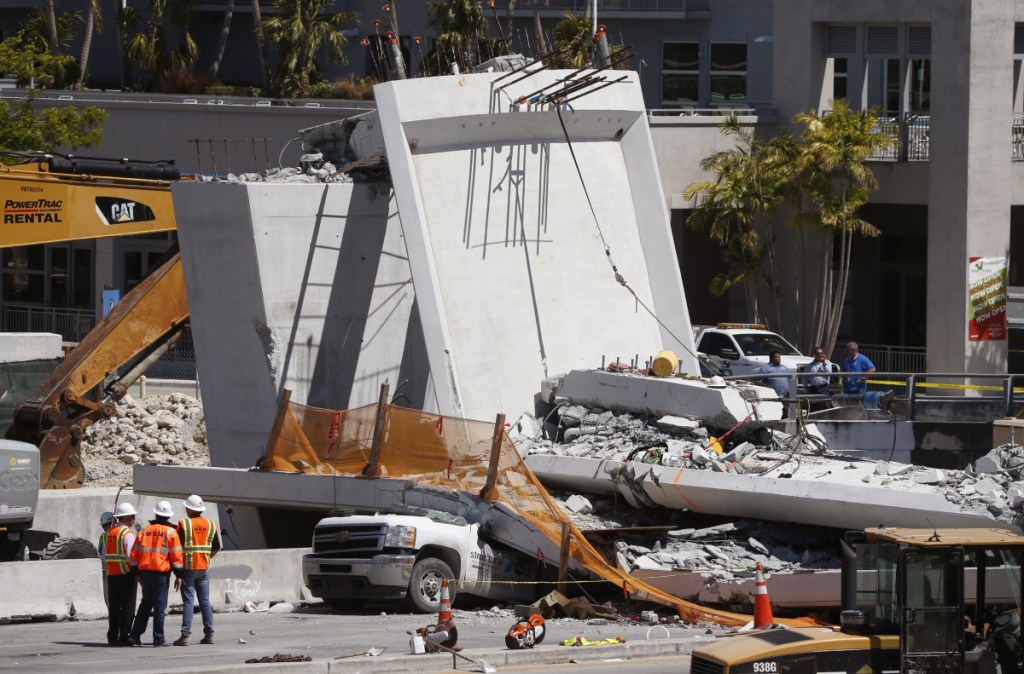MIAMI — An engineer left a voicemail two days before a catastrophic bridge failure in Miami to say some cracking had been found at one end of the concrete span, but the voicemail wasn’t picked up until after the collapse, Florida Department of Transportation officials said Friday.
The voicemail left on a landline wasn’t heard by a state employee until Friday because the employee was out of the office on an assignment, the agency said in an email.
In a transcript released Friday night, Denney Pate with FIGG Bridge Group says the cracking would need repairs “but from a safety perspective we don’t see that there’s any issue there so we’re not concerned about it from that perspective.”
The bridge collapsed Thursday, killing at least six people. Authorities are slowly removing the debris, looking for more victims.
At a news conference Friday night, officials from the National Transportation Safety Board said they have just begun their investigation, and cannot yet say whether any cracking contributed to the collapse. They also said workers were trying to strengthen a diagonal member on the pedestrian bridge at Florida International University when it collapsed.
Robert Accetta, the investigator-in-charge for the NTSB, said crews were applying post-tensioning force, but investigators aren’t sure if that’s what caused the bridge to fall.
In a news release late Friday, FIGG Bridge Engineers said it “continues to work diligently” to determine the cause of the collapse, and is examining the steps its team has taken. It added, “The evaluation was based on the best available information at that time and indicated that there were no safety issues.” It also asked for time to accurately determine what led to the accident.
While families waited for word on their loved ones, investigators sought to understand why the 950-ton bridge gave way during construction. The cables supporting the span were being tightened following a “stress test” when it collapsed, authorities said.
The Florida Department of Transportation said in its Friday release that it had not been notified of any stress test.
Detectives declared the rubble a homicide scene.
Scheduled to open in 2019, the bridge would have provided safe passage over a canal and six lanes of traffic and created a showpiece architectural feature connecting the campus of FIU with the community of Sweetwater, where many students live.
The $14.2 million project was supposed to take advantage of a faster, cheaper and safer method of bridge-building promoted by the university.
The bridge was put in place March 10, five days before the collapse.
When finished, the span would have been supported from above, with a tall, off-center tower and cables attached to the walkway. That tower had not yet been installed, and it was unclear what builders were using as temporary supports.
Send questions/comments to the editors.



Success. Please wait for the page to reload. If the page does not reload within 5 seconds, please refresh the page.
Enter your email and password to access comments.
Hi, to comment on stories you must . This profile is in addition to your subscription and website login.
Already have a commenting profile? .
Invalid username/password.
Please check your email to confirm and complete your registration.
Only subscribers are eligible to post comments. Please subscribe or login first for digital access. Here’s why.
Use the form below to reset your password. When you've submitted your account email, we will send an email with a reset code.